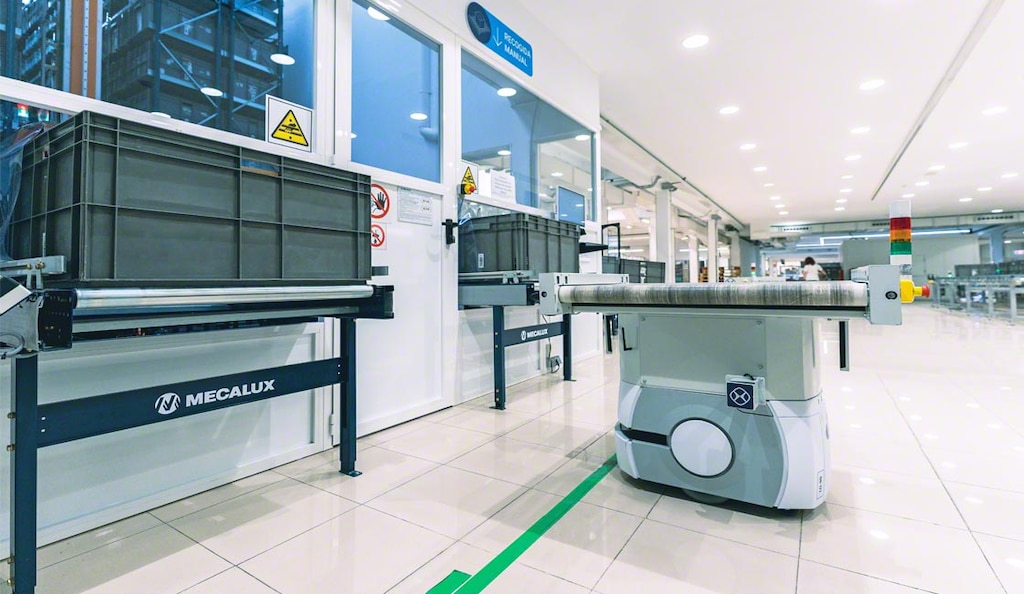
LOGISTICS RESEARCH
» Carl Marcus Wallenburg, WHU – Otto Beisheim School of Management (Germany)
» Michael Knemeyer, Fisher College of Business, The Ohio State University (US)
Third-party logistics providers (3PLs) have become key partners for companies outsourcing their warehouse and distribution processes. What trends will shape the future of 3PLs? According to researchers from WHU – Otto Beisheim School of Management (Germany) and Fisher College of Business (US), automation, digitalization, and Industry 4.0 will continue to dramatically transform 3PL operations in the coming years.
“Technologies such as artificial intelligence, robotics, drones, the Internet of Things, augmented reality, and blockchain are empowering 3PLs to enhance their operational speed and responsiveness,” says Carl Marcus Wallenburg, Professor of Logistics at the WHU – Otto Beisheim School of Management and co-author of The future of 3PLs.
Besides streamlining their logistics processes, the latest technological advancements are also helping 3PLs “improve their collaboration with clients, make dynamic decisions using real-time information, and boost resilience through proactive data-driven modeling,” says Professor of Logistics Michael Knemeyer from Fisher College of Business.
Flexible technologies in warehousing
In their work, Wallenburg and Knemeyer argue that a prominent trend reshaping 3PL logistics is the rapid advancement of robotics and automation: “While technology is deemed crucial, many third-party logistics providers are still falling short of meeting their clients’ tech expectations. However, the emergence of autonomous mobile robots (AMRs) is changing the game. AMRs can boost efficiency and enhance operational flexibility in warehouses.”
The short payback periods for these autonomous technologies make them an attractive investment for 3PLs, who can provide increased automation and efficiency to their clients. “AMRs offer a flexible solution that can easily adapt to changing contexts. For instance, they can be used for multiple clients in a shared warehouse, and the number of robots can be scaled up or down based on specific seasonal demands and operational loads,” the authors explain.

Digitalization for streamlined operations
Digital technologies are another growing trend in 3PL operations. The experts suggest that cloud-based solutions enable 3PLs to minimize capital expenditures and fixed costs while efficiently scaling their services. “These technologies provide real-time visibility, cost-effectiveness, and flexibility, giving 3PLs a competitive edge.”
Technological advancements in big data analytics and artificial intelligence will also be game changers for 3PLs, as they offer potential benefits across all services provided to their clients. According to the authors, big data analytics allows 3PLs to harness vast amounts of data to make better predictions and proactive recommendations. “This capability enables 3PLs to significantly improve operational efficiency by using real-time data for tasks like staffing warehouses, selecting optimal picking routes, and even optimizing service levels for multiple clients.”
Navigating uncertain environments
Predicting the future in the fast-evolving world of logistics can be a daunting task. But there is a shared challenge that all businesses, including 3PLs, must address: uncertainty.
“Events are getting more difficult to predict as supply chains are faced with a world that is getting increasingly VUCA (volatile, uncertain, complex, and ambiguous),” state the academics. While this unpredictable environment presents challenges to how 3PLs operate and their ability to meet rising client expectations, it also offers significant opportunities.
The authors conclude: “The inherent challenges of this operating environment will motivate companies to seek out logistics service experts and 3PLs who can assist them in responding to the disruptions and changes anticipated in the years ahead.”
Original publication: Wallenburg, Carl Marcus, and A. Michael Knemeyer. 2022. The Future of 3PLs. Global Logistics and Supply Chain Strategies for the 2020s, December, 119–33.
